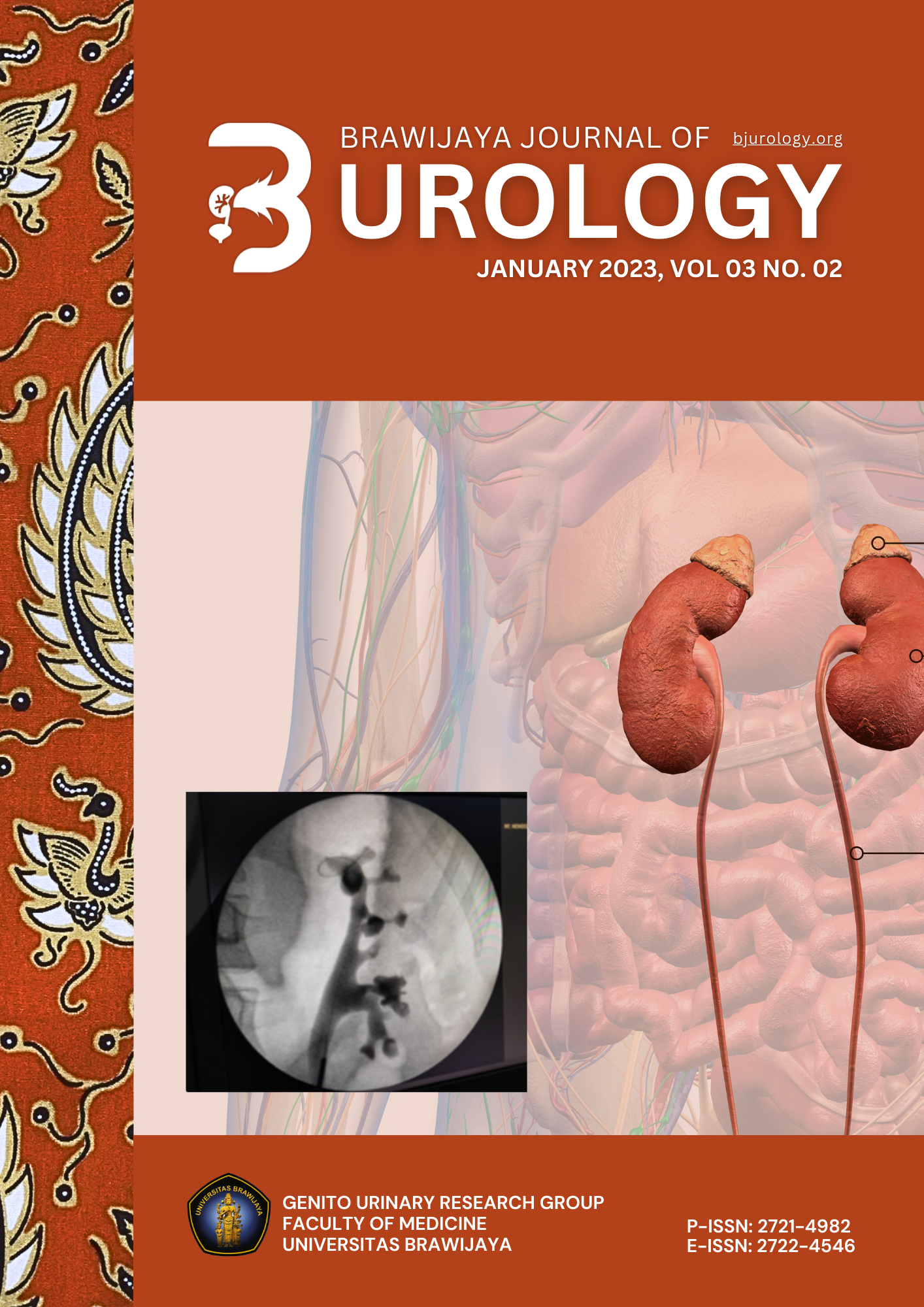Efficacy and Safety of Combination therapy compared to Monotherapy for Overactive Bladder: A Meta-Analysis
DOI:
https://doi.org/10.11594/bjurology.2023.003.02.4Keywords:
combination therapy, monotherapy, overactive bladderAbstract
Introduction. Overactive Bladder (OAB) Syndrome is urinary urgency often accompanied by increased daytime frequency and nocturia, with or without urgency incontinence. Individuals with OAB report significant impairment to quality of life. Antimuscarinic become first line therapy of OAB patients with dose escalation or change of antimuscarinic if symptom improvement is inadequate. Increasing the antimuscarinic dose often exacerbates anticholinergic Adverse Events (AEs) that can lead to treatment discontinuation. The aim of this meta-analysis to find out the efficacy and safety of combination therapy compared to solifenacin alone.
Methods . We searched for data’s of Randomized clinical trials in PUBMED, EMBASE, and the Cochrane Library. There was no year restriction and only English is allowed. The outcomes were Micturition Episode/24h , Incontinence Episode/24h , AEs and Discontinue medication due to AEs. The data’s were carried out using PRISMA guideline and statistically analysed by using RevMan 5.3.0.
Result. Three RCTs studies, including 7007 patients were assessed for efficacy and safety of combination therapy compared solifenacin alone. It is revealed Micturation [HR -0.46; 95%CI: -0.63, -0.29; I2 13%; p<0.00], Incontinence [HR -0.27; 95%CI: -0.42, -0.13; I2 13%; p<0.00], Adverse Events [HR 1.09; 95%CI: 0.94, 1.27; I2 0%; p=0.27] and Discontinue Medication due to AEs [HR 1.26; 95%CI: 0.70, 2.24; I2 0%; p=0.44].
Conclusion. The efficacy of combination therapy of mirabegron plus solifenacin significantly improved storage symptoms regarding micturition and incontinence episode, compared to solifenacin monotherapy. Combination therapy provides better therapeutic benefits for patients with overactive bladder syndrome.












